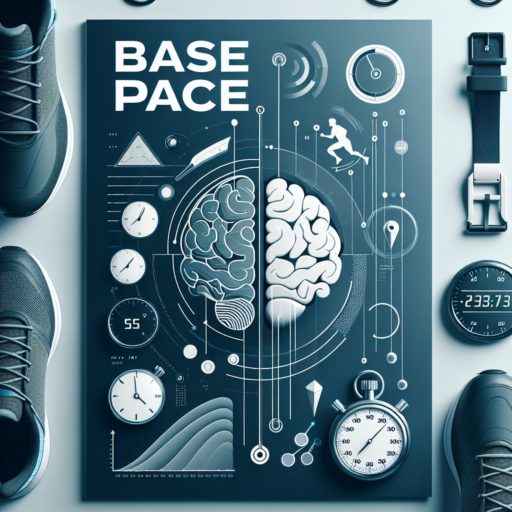What is a Sub 4 Hour Marathon Pace?
Achieving a sub 4 hour marathon is a significant milestone for many runners, symbolizing a move from amateur to the more serious, dedicated long-distance athlete. This aspiration hinges on maintaining a consistent pace throughout the 42.2 kilometers (26.2 miles) of the race. To break it down simply, a sub 4 hour marathon pace requires a runner to maintain an average pace of approximately 9:09 minutes per mile or 5:41 minutes per kilometer.
Understanding the Pace
Embarking on the quest for a sub 4 hour marathon requires a deep understanding of pacing. This means not just starting strong but preserving enough energy to maintain or even improve your pace during the latter half of the race, famously known as «negative splitting.» It’s not purely about physical endurance, but also about strategic planning and pace management over the race’s entire distance. Ready and consistent pacing avoids the all-too-common mistake of starting too fast and struggling in the final miles.
Training and Strategy
Achieving this pace necessitates a structured training program tailored to improving endurance, speed, and running efficiency. Runners should incorporate a mix of long runs, tempo runs, and interval training, each component designed to prepare the body and mind for the rigors of maintaining a sub 4 hour pace. Additionally, race day strategy plays a pivotal role, including nutrition, hydration, and pace groups, which can help in maintaining the necessary speed across all sections of the course.
Successfully running a marathon in under 4 hours is a testament to a runner’s dedication, training, and strategic planning. While the pace may seem daunting at first, with the right preparation and mindset, this milestone is within reach for many dedicated athletes.
No se han encontrado productos.
Training Tips to Achieve a Sub 4 Hour Marathon
Accomplishing a marathon in less than four hours is a significant achievement for many runners, combining endurance, speed, and a well-thought-out training plan. The journey to breaking the sub 4-hour mark requires consistency, the right approach to training, and an unwavering commitment to your fitness goals.
Integrate Interval Training into Your Routine
One key strategy in your training arsenal should revolve around interval training. This involves short bursts of high-intensity running followed by periods of lower intensity or rest. The purpose is to improve your speed and endurance simultaneously, allowing your body to adapt to sustaining a faster pace over longer distances. Incorporating intervals once or twice a week can significantly enhance your running economy and push you closer to your goal.
Build Your Long Runs Gradually
Long runs are the cornerstone of marathon training. They prepare your body and mind for the taxing distance of 26.2 miles. However, increasing your long-run distance too quickly can lead to injury or burnout. Aim to extend your long run by no more than 10% each week, allowing for ample recovery. These runs, performed at a slower pace than your intended marathon pace, build endurance efficiently and safely, edging you closer to the sub 4-hour goal.
Elevating your marathon performance to break the sub 4-hour barrier demands a blend of smart training techniques, proper rest, and nutrition. By focusing on quality over quantity, integrating varied training methods, and listening to your body, achieving this coveted running milestone is within your grasp.
Essential Gear for a Sub 4 Hour Marathon Run
Running a marathon in under four hours is a significant achievement for many athletes. Achieving this goal requires not only rigorous training but also the right gear. Proper equipment can complement your preparation, ensuring both comfort and performance optimization throughout the 26.2 miles. From advanced footwear to hydration solutions, we’ll explore the crucial elements every runner should consider.
High-Performance Running Shoes
A cornerstone of any marathon runner’s arsenal is a pair of high-performance running shoes. These shoes should offer ample support and cushioning to minimize the impact on the runner’s joints over long distances. Equally important is finding a lightweight model that doesn’t compromise on durability or support. Many athletes favor shoes with energy-return technology, which can help propel you forward and reduce fatigue, a vital component for maintaining pace in the later stages of the race.
Moisture-Wicking Clothing
To keep discomfort at bay and focus on the race, wearing moisture-wicking clothing is essential. These fabrics are specially designed to pull sweat away from your body, keeping you dry and comfortable. A high-quality, breathable running shirt and shorts can make a substantial difference, especially under challenging weather conditions. Additionally, anti-chafing features and a snug fit can prevent skin irritation, which is crucial for a marathon’s duration.
Hydration and Nutrition Systems
Fueling your body correctly throughout the race is non-negotiable for a sub 4 hour marathon. Ideal gear includes lightweight hydration packs or belts that allow for easy access to water and electrolytes without slowing you down. Furthermore, carrying energy gels or bars that are easy to consume on the move is wise. These should be tested during training runs to ensure they sit well with your stomach and provide the necessary energy boost without discomfort.
Nutrition and Hydration Strategies for Maintaining a Sub 4 Hour Pace
Maintaining a sub 4 hour pace in a marathon requires not just rigorous training, but also precise attention to nutrition and hydration strategies. The balance of energy intake and expenditure, along with timely hydration, can make or break your race performance. This critical approach begins long before race day and extends throughout the race, requiring a well-structured plan for both nutrition and hydration.
Pre-Race Nutrition
Your nutrition strategy should start well before the race day. Carbohydrate loading, which involves increasing carbohydrate intake in the days leading up to the race, is a key strategy to maximize muscle glycogen stores. It’s essential to focus on complex carbohydrates such as whole grains, pasta, rice, and vegetables, accompanied by a reduction in fat intake to ensure optimal glycogen storage. Additionally, maintaining a good hydration level is crucial; begin hydrating days before to ensure you start the race adequately hydrated.
During the Race: Nutrition
During the race, maintaining energy levels is paramount. Aim to consume about 30-60 grams of carbohydrates per hour. This can come from gels, chews, or even sports drinks, which serve the dual purpose of providing both hydration and energy. Balancing the types of carbohydrates can help avoid GI distress, so practicing your nutrition strategy during training runs is essential. Remember, the goal is to eat before you’re hungry and drink before you’re thirsty to avoid the pitfalls of dehydration and glycogen depletion.
During the Race: Hydration
Hydration is equally important, with a need to adjust based on weather conditions and sweat rate. A general guideline is to drink about 500-700ml of fluid per hour, which could include water or electrolyte solutions. Electrolytes, especially sodium, play a vital role in preventing hyponatremia, a condition caused by excessive water intake without adequate electrolyte replacement. Start hydrating early in the race, and aim for small, frequent sips, adjusting based on your thirst, the intensity of the race, and weather conditions.
Common Mistakes to Avoid When Aiming for a Sub 4 Hour Marathon
Striving for a sub 4 hour marathon is an ambitious goal that requires a mix of talent, hard work, and strategic planning. However, even the most dedicated runners can unwittingly fall prey to common pitfalls that hinder their performance. By recognizing and avoiding these mistakes, you can enhance your training efficacy and race execution, bringing you closer to achieving that coveted sub-4-hour finish.
Inadequate Training Volume
One significant error that aspiring sub-4-hour marathoners often make is not accumulating enough mileage during their training. Achieving this time threshold demands a strong foundation of endurance, which can only be built through consistent, high-volume training. Skimping on long runs or overall weekly mileage can leave runners underprepared for the physical and mental demands of completing 26.2 miles at the required pace.
Poor Pacing Strategy
Another stumbling block is a poor pacing strategy. Many runners start the marathon too fast, buoyed by fresh legs and adrenaline, only to find themselves struggling in the later stages. Effective marathon pacing involves starting conservatively and gradually increasing your pace, aiming for negative splits. This approach not only conserves energy but also accounts for the inevitable fatigue that sets in towards the race’s end.
Ignoring Nutrition and Hydration
Finally, neglecting proper nutrition and hydration before and during the marathon can dramatically impair your performance. Fueling your body correctly is crucial for sustaining energy levels and preventing cramps or fatigue. Starting the race well-hydrated and consuming carbohydrates throughout is fundamental to maintaining a consistent pace and crossing the finish line within your target time.
How to Build a Sub 4 Hour Marathon Training Plan
Building a Sub 4 Hour Marathon Training Plan is a goal for many runners, signifying a significant achievement in long-distance running. It requires dedication, proper planning, and understanding the balance between speed and endurance training. A strategic approach to your training plan can make this ambitious goal achievable.
Key Components of a Training Plan
- Mileage Build-Up: Gradually increasing your weekly mileage is crucial to enhance your aerobic capacity without risking injury. Begin with a base that you’re comfortable with, then increase your total weekly mileage by 10% each week.
- Speed Workouts: Integrating intervals, tempo runs, and Yasso 800s can improve your running economy and teach your body to sustain a faster pace over the marathon distance.
- Long Runs: Weekly long runs are the backbone of marathon training, acclimatizing your body to endure prolonged periods of running. Aim to gradually extend your long run until you’re comfortably running at least 20 miles.
To efficiently achieve a marathon time under four hours, it’s essential to focus on both your physical preparation and a well-structured training plan. Consistency in your training, complemented by adequate rest and nutrition, will be key to crossing the finish line with your desired time.
Recovery Techniques to Help You Bounce Back
Experiencing setbacks is a natural part of life’s journey, whether in our personal lives or professional endeavors. However, the ability to recover and rebound from these setbacks is what truly defines resilience and success. In this discussion, we delve into effective recovery techniques that can empower you to navigate through challenging times and emerge stronger on the other side.
One of the first steps in the recovery process involves acknowledging your current situation and allowing yourself to feel and process your emotions. This emotional acceptance can be pivotal in laying the groundwork for effective healing and recovery. By understanding that it’s okay not to be okay, you create a space where you can start to rebuild your emotional strength and resilience.
Key Strategies for Emotional and Physical Recovery
- Mindfulness and Meditation: Engaging in mindfulness practices and meditation can significantly enhance your mental health, promoting a sense of peace and clarity. This can be particularly beneficial in reducing stress and anxiety, allowing you to focus on your recovery journey.
- Physical Activity: Incorporating regular physical activity into your routine can boost your mood and energy levels, contributing to both physical and emotional healing. Even simple activities like walking or yoga can have profound effects on your overall wellbeing.
- Social Support: Surrounding yourself with a supportive network of friends and family can provide valuable emotional support and encouragement. Sharing your experiences and challenges with trusted individuals can make the recovery process less daunting and more manageable.
Implementing these recovery techniques requires patience and persistence, as healing is not a linear process. Each individual’s journey is unique, and what works for one person may not work for another. Therefore, it is essential to explore different strategies and find what best suits your needs and situation. By adopting a holistic approach to recovery, you can set the foundation for a stronger, more resilient future.
Mental Preparation for Breaking the Sub 4 Hour Marathon Barrier
Understanding the Psychological Challenge
Breaking the sub 4 hour marathon barrier is not just a physical challenge, but a significant mental hurdle as well. Runners need to understand that the mental fortitude required is just as critical as their physical training. Embracing the psychological aspect of marathon running is essential in pushing past the comfort zone and achieving a sub 4 hour time. Identifying personal mental barriers and addressing them head-on can make the difference between success and falling short.
Strategies for Mental Strength Building
To conquer the mental challenges, runners should incorporate several strategies into their training regimen. First, visualization techniques can be remarkably effective. Imagining oneself crossing the finish line under four hours fuels motivation and prepares the mind for the task ahead. Additionally, setting smaller, achievable milestones within the training program can enhance a runner’s confidence and belief in their ability. Building a positive support network is also crucial; having encouragement from friends, family, or a running community can boost morale and keep motivation high during tough training periods.
The Importance of Race Day Mental Tactics
On race day, maintaining a positive mental attitude is key. Runners should focus on breaking the race into manageable segments, thereby reducing it from a daunting 26.2 miles to smaller, more approachable units. Concentrating on the current mile, rather than the total remaining distance, helps manage stress and fatigue. Implementing mantra or affirmation practices can also sustain a runner’s spirit through challenging stretches of the race. Staying flexible and adjusting goals as needed based on the day’s conditions and performance can also prevent discouragement and aid in maintaining a strong mental approach throughout the marathon.
Success Stories: Runners Who Achieved the Sub 4 Hour Marathon
The quest to break the 4-hour barrier in the marathon world is a prestigious achievement that tests the limits of endurance, speed, and mental toughness. This milestone has inspired a myriad of runners, from seasoned marathoners to enthusiastic amateurs, to push beyond their perceived boundaries. At the heart of these triumphs are the captivating success stories of individuals who have conquered this challenge, showcasing not just their physical prowess but also immense dedication and strategic preparation.
Among these tales of victory, several stand out for their sheer inspiration and the invaluable lessons they impart to aspiring marathoners. These stories often start with a common goal and culminate in a triumphant sub 4-hour finish, but the journeys are uniquely personal. From meticulous training schedules and diet modifications to mental resilience strategies, each runner carved a distinct path to success. These narratives highlight not only the physical demands of running a marathon in under four hours but also the emotional and psychological fortitude required to achieve such a feat.
As we delve into these tales, it becomes evident that achieving a sub 4-hour marathon transcends the realm of personal achievement. It signals a runner’s entry into a select group of athletes who have managed to blend passion, discipline, and tenacity. For many in the running community, these success stories serve as a beacon of possibility, motivating others to set their sights on this coveted milestone. Through strategic training, continuous self-improvement, and an unwavering belief in their capacity for greatness, countless runners continue to draw inspiration from these stories as they chase their own sub 4-hour dreams.




